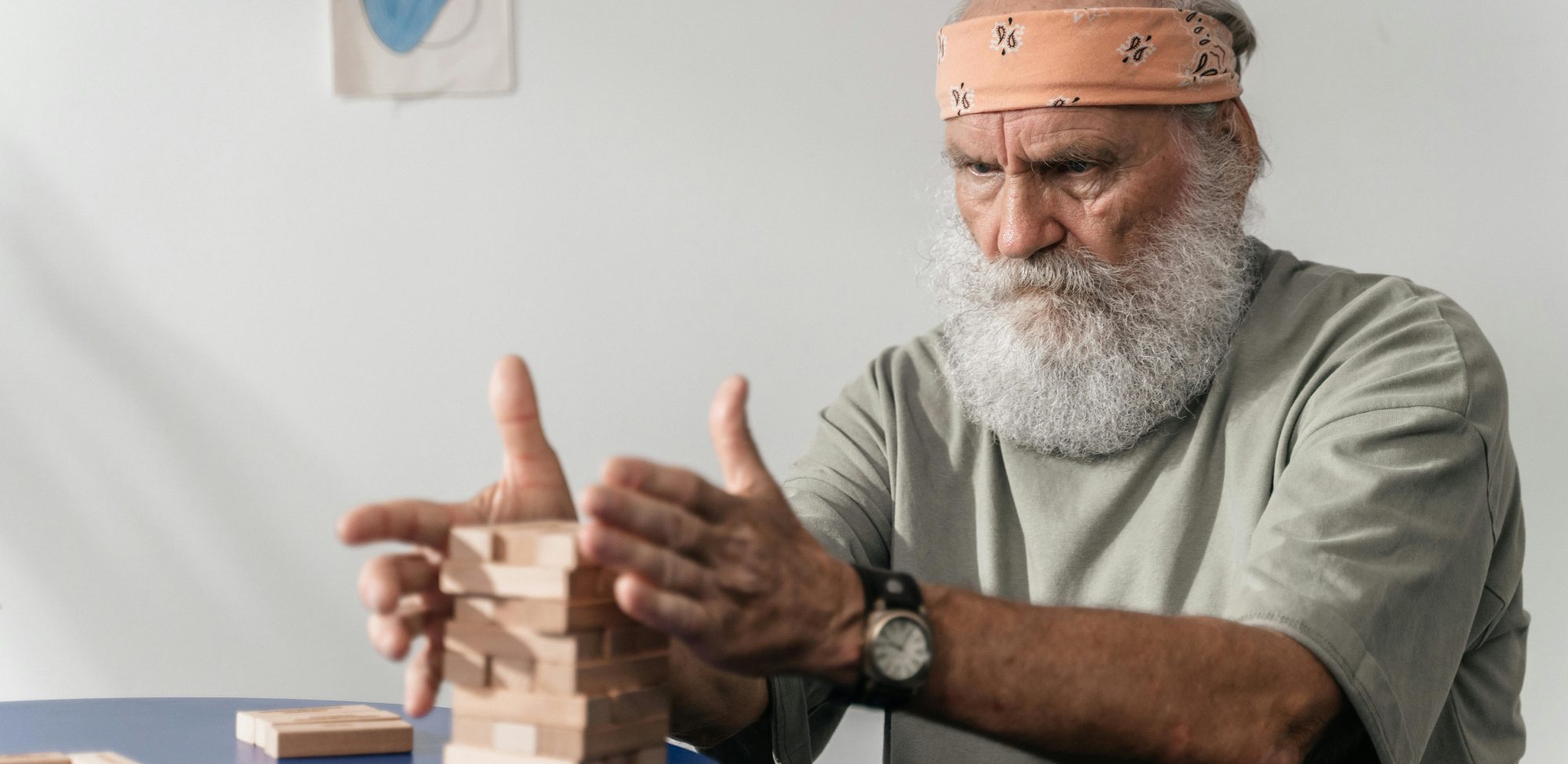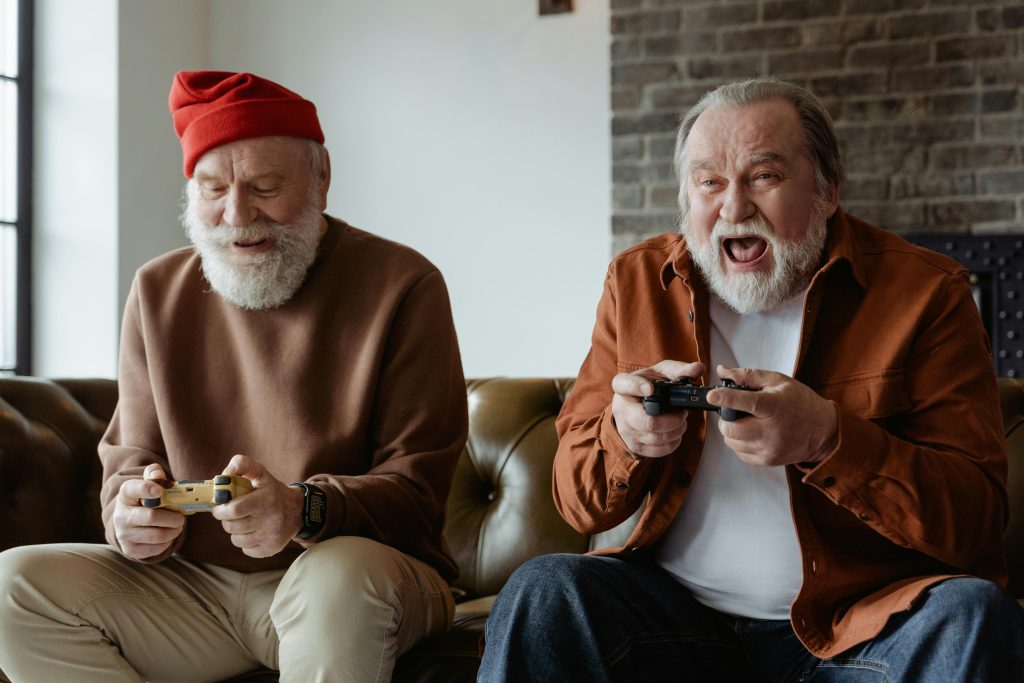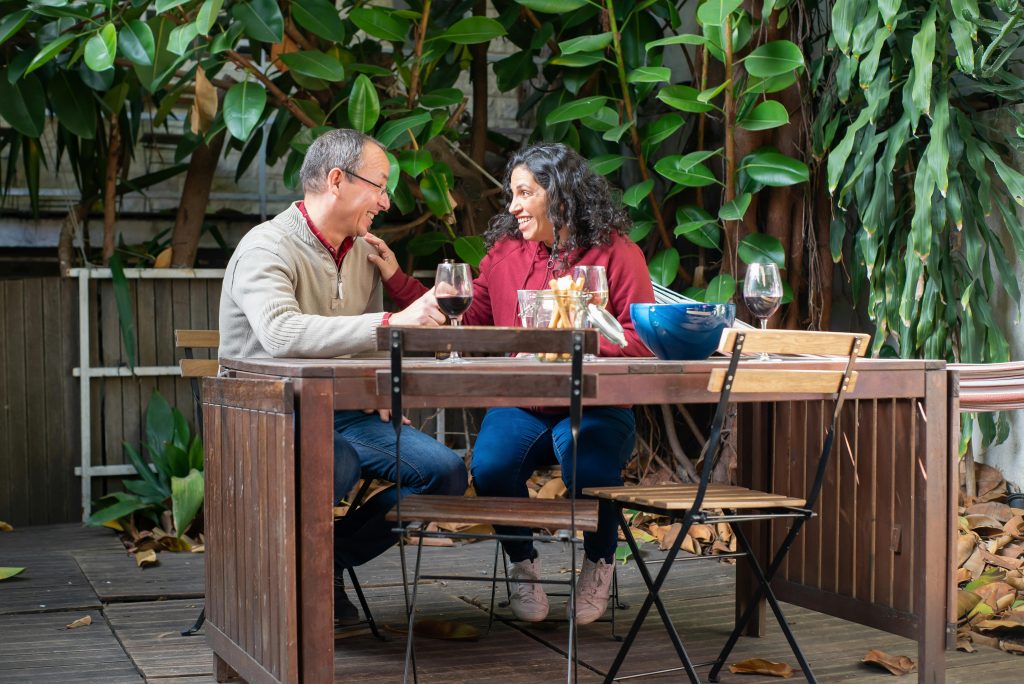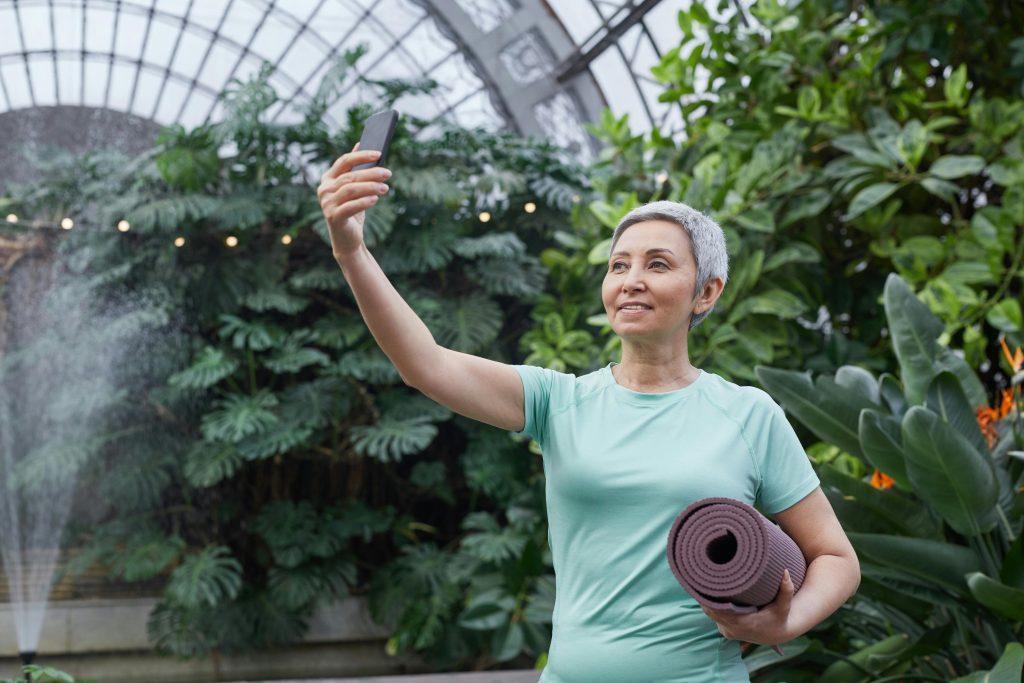Chair Exercises for the Elderly: Ultimate Guide to Transform Your Health & Vitality After 65

Chair Exercises for the Elderly: Ultimate Guide to Transform Your Health & Vitality After 65.
The golden years should be filled with vitality, not limited by physical constraints. Yet millions of seniors face a heartbreaking reality: traditional exercise routines become increasingly challenging, leaving them feeling isolated from the world of fitness and wellness. This devastating cycle of inactivity leads to muscle weakness, balance issues, and a profound loss of independence that affects every aspect of daily life.
But what if there was a revolutionary approach that could transform how seniors view exercise? What if staying active could be as simple as sitting in a chair? Welcome to the empowering world of chair exercises for the elderly – a groundbreaking fitness solution that’s changing lives one seated movement at a time. These innovative chair exercises for the elderly have become the cornerstone of modern senior fitness programs worldwide.

The Hidden Crisis: Why Traditional Exercise Fails Our Seniors
The statistics are sobering. According to the Centers for Disease Control and Prevention, only 28% of adults aged 65 and older engage in regular physical activity. This isn’t due to lack of motivation or willpower – it’s because traditional exercise programs often ignore the unique challenges seniors face.
Mobility limitations, joint pain, balance concerns, and chronic conditions create seemingly insurmountable barriers. The fear of falling becomes so overwhelming that many seniors choose complete inactivity over the risk of injury. This well-intentioned self-preservation instinct, however, accelerates the very decline they’re trying to prevent.
The consequences are devastating:
- Muscle mass decreases by 3-8% per decade after age 30
- Balance deteriorates, increasing fall risk by 32%
- Cardiovascular health declines rapidly
- Mental health suffers as social isolation increases
- Independence gradually erodes
Chair Exercises for the Elderly: The Revolutionary Solution
Enter the transformative world of seated fitness. Chair exercises for the elderly represent more than just modified movements – they’re a complete paradigm shift that recognizes seniors’ inherent dignity while addressing their unique needs. Many healthcare professionals now recommend chair exercises for the elderly as the most effective starting point for seniors who want to regain their fitness and independence.
These innovative exercises eliminate the primary barriers that prevent seniors from staying active. No more worrying about falling. No more struggling with complex equipment. No more feeling excluded from fitness communities. Chair-based workouts provide a stable, safe foundation that allows seniors to focus on what truly matters: moving their bodies and reclaiming their vitality.
The Science Behind Seated Success
Research consistently demonstrates that chair exercises for the elderly can produce remarkable results. A groundbreaking study published in the Journal of Aging and Physical Activity found that seniors who participated in chair-based exercise programs showed:
- 23% improvement in upper body strength
- 19% enhancement in flexibility
- 27% boost in cardiovascular endurance
- Significant improvements in mood and cognitive function
The beauty of chair exercises for the elderly lies in their adaptability. Whether someone is recovering from surgery, managing arthritis, or simply looking for a gentler approach to fitness, these exercises can be customized to meet individual needs and abilities. Physical therapists and fitness experts consistently recommend chair exercises for the elderly because they provide maximum benefit with minimum risk.
Essential Chair Exercises for Every Senior
Upper Body Strengthening Movements
Seated Arm Circles This fundamental movement targets the shoulders and upper back while improving circulation. Sit tall in your chair with feet flat on the floor. Extend arms out to the sides at shoulder height. Make small circles forward for 10 repetitions, then reverse direction. This simple exercise helps combat the rounded shoulder posture that commonly develops with age.
Chair Push-Ups Transform your sturdy chair into a strength-building tool. Place hands on the chair arms and slowly push yourself up while keeping your feet planted. This modified push-up builds chest, shoulder, and arm strength without the complexity of floor exercises. Start with 5 repetitions and gradually increase as strength improves.
Seated Rows Using resistance bands or simply your own body weight, this exercise targets the often-neglected back muscles. Sit forward in your chair, extend arms in front of you, then pull elbows back while squeezing shoulder blades together. This movement counteracts the forward head posture that contributes to back pain and poor posture.
Core Strengthening for Stability
Seated Marching This dynamic movement engages the core while improving coordination. Sit tall and lift one knee toward your chest, then lower it while lifting the other knee. The alternating motion activates deep abdominal muscles that are crucial for balance and stability. Perform 10-15 repetitions on each leg.
Seated Twists Core rotation is essential for daily activities like reaching for objects or looking behind while driving. Sit tall with arms crossed over chest. Rotate your torso to the right, hold for 2 seconds, then rotate to the left. This exercise improves spinal mobility and strengthens the oblique muscles that support the lower back.
Seated Leg Extensions While primarily targeting the quadriceps, this exercise also engages the core for stability. Sit tall and extend one leg straight out, hold for 2 seconds, then lower slowly. The controlled movement builds leg strength while improving balance and coordination.
Flexibility and Range of Motion
Neck Stretches Tension in the neck and shoulders is common among seniors, especially those who spend time reading or using computers. Gentle neck rotations and side bends can relieve tension and improve range of motion. Move slowly and never force any position.
Seated Spinal Twists Spinal flexibility is crucial for maintaining independence in daily activities. Sit tall, place one hand on the opposite knee, and gently rotate your spine. Hold for 15-30 seconds, then repeat on the other side. This movement helps maintain the natural curves of the spine and prevents stiffness.
Ankle Circles and Flexion Often overlooked, ankle mobility is crucial for walking and balance. Lift one foot slightly off the floor and make circles with your ankle. Then flex and point your foot to improve circulation and maintain range of motion. These simple movements can prevent the ankle stiffness that contributes to falls.
Cardiovascular Health Through Seated Movement
Many seniors believe that effective cardiovascular exercise requires intense, high-impact movements. Chair exercises for the elderly prove otherwise. Seated cardio routines can elevate heart rate, improve circulation, and boost endurance while maintaining the safety and stability that seniors need. The cardiovascular benefits of chair exercises for the elderly are now well-documented in medical literature.
Heart-Pumping Seated Routines
Seated Boxing This energizing exercise combines upper body movement with cardiovascular challenge. Sit tall and throw gentle punches forward, alternating arms. The continuous arm movement elevates heart rate while building upper body strength. Add gentle torso rotation to increase the intensity and engage core muscles.
Seated Dancing Music has the power to transform exercise from obligation to celebration. Seated dancing allows seniors to move to their favorite tunes while getting their heart pumping. The rhythmic movements improve coordination, boost mood, and provide excellent cardiovascular benefits. Choose music with a moderate tempo and let the joy of movement take over.
Rapid Arm Movements Simple arm movements performed at a faster pace can create an effective cardiovascular workout. Arm circles, reaching movements, and clapping exercises can be combined into sequences that challenge the cardiovascular system while remaining completely safe and accessible.
The Mental Health Revolution
The benefits of chair exercises for the elderly extend far beyond physical improvements. The psychological impact of regular movement cannot be overstated, particularly for seniors who may feel disconnected from their bodies or discouraged by physical limitations. Mental health professionals increasingly recognize that chair exercises for the elderly can be powerful tools for combating depression and anxiety in senior populations.
Combating Depression and Anxiety
Regular exercise releases endorphins – the body’s natural mood elevators. For seniors dealing with depression, anxiety, or social isolation, chair exercises provide a pathway back to emotional well-being. The accomplishment of completing a workout routine, regardless of its intensity, builds confidence and self-efficacy.
The social aspect of group chair exercise classes creates community connections that combat loneliness. Shared experiences of progress and achievement foster friendships and support networks that extend beyond the exercise session.
Cognitive Benefits
Physical activity stimulates brain function and may help prevent cognitive decline. Chair exercises for the elderly that incorporate coordination, memory, and sequencing elements provide cognitive challenges that keep the mind sharp. Following exercise sequences, counting repetitions, and coordinating movements with music all contribute to brain health.
Overcoming Common Obstacles
Despite the obvious benefits, many seniors still hesitate to begin chair exercise programs. Understanding and addressing these concerns is crucial for successful adoption. The key to overcoming these obstacles lies in proper education about how safe and effective chair exercises for the elderly can be when performed correctly.
Safety Concerns
The fear of injury is perhaps the most significant barrier. This fear is often based on past experiences or witnessed accidents. Chair exercises for the elderly address this concern by providing a stable base of support that eliminates fall risk. The controlled movements reduce the likelihood of strain or injury while still providing effective exercise. Safety studies show that chair exercises for the elderly have the lowest injury rates among all senior fitness programs.
Equipment and Space Limitations
Many seniors live in apartments or assisted living facilities with limited space. The beauty of chair exercises for the elderly is their minimal space requirement. A single sturdy chair in a small area is sufficient for a complete workout. No expensive equipment purchases or gym memberships are necessary. This accessibility makes chair exercises for the elderly the perfect solution for seniors with space constraints.
Lack of Motivation
Starting any new routine can be challenging, especially for those who have been inactive for extended periods. Setting small, achievable goals helps build momentum. Beginning with just 5-10 minutes of chair exercises three times per week can establish a foundation for more extensive routines.

Professional Guidance and Community Support
While chair exercises for the elderly are designed to be safe and accessible, professional guidance can maximize benefits and ensure proper form. Many communities offer specialized programs led by certified instructors who understand the unique needs of seniors. These professionals have specific training in adapting chair exercises for the elderly to accommodate various health conditions and physical limitations.
Finding Qualified Instructors
Look for instructors with certifications in senior fitness or adaptive exercise. These professionals understand the physiological changes that occur with aging and can modify exercises to accommodate various health conditions and limitations.
Building Exercise Communities
Group classes provide motivation, accountability, and social interaction. Many senior centers, community centers, and healthcare facilities offer chair exercise programs. These groups often become tight-knit communities where friendships flourish and members support each other’s fitness journeys.
Technology and Tools for Enhanced Experience
Modern technology can enhance the chair exercise experience for seniors. From online videos to specialized equipment, various tools can make workouts more engaging and effective. Technology has revolutionized how we approach chair exercises for the elderly, making them more accessible and enjoyable than ever before.
Recommended Equipment: The HUR Resistance Chair
While basic chair exercises for the elderly require minimal equipment, specialized tools can enhance the experience. The HUR BioCircuit Resistance Chair, available on Amazon, represents the pinnacle of chair-based exercise equipment. This innovative device combines pneumatic resistance with ergonomic design to provide a complete workout experience.
The HUR Resistance Chair features:
- Pneumatic resistance that adjusts to individual strength levels
- Ergonomic seating that supports proper posture
- Multiple exercise options targeting all major muscle groups
- Digital display tracking progress and repetitions
- Safety features that prevent injury
This professional-grade equipment transforms any space into a comprehensive fitness center for seniors. While the investment is significant, the long-term benefits in terms of improved health, independence, and quality of life make it worthwhile for many seniors and their families.
Digital Resources and Apps
Numerous apps and online platforms offer guided chair exercise routines specifically designed for seniors. These digital resources provide variety, professional instruction, and the convenience of exercising at home. Many feature progress tracking and customizable routines that adapt to individual capabilities.
Nutrition and Hydration for Exercise Success
Chair exercises for the elderly work best when combined with proper nutrition and hydration. Seniors often struggle with decreased appetite and inadequate fluid intake, both of which can impact exercise performance and recovery.
Pre-Exercise Nutrition
Light, easily digestible foods consumed 30-60 minutes before exercise provide energy without causing discomfort. Fresh fruit, yogurt, or a small handful of nuts can provide the necessary fuel for a productive workout session.
Hydration Strategies
Proper hydration is crucial for seniors, who may have diminished thirst sensation. Keeping water nearby during exercise sessions and sipping regularly helps maintain optimal hydration levels. Avoid excessive fluid intake immediately before exercise to prevent discomfort.
Creating Sustainable Routines
The key to success with chair exercises for the elderly lies in creating sustainable, enjoyable routines that fit seamlessly into daily life. Sustainability requires realistic expectations, gradual progression, and flexibility to accommodate changing needs and circumstances. Success stories from seniors who have embraced chair exercises for the elderly consistently show that consistency trumps intensity in achieving long-term health benefits.
Weekly Planning Strategies
Start with 2-3 exercise sessions per week, allowing rest days between workouts. As strength and endurance improve, gradually increase frequency and duration. Consistency is more important than intensity, so aim for regular, moderate exercise rather than occasional intense sessions.
Tracking Progress
Keeping a simple exercise log helps maintain motivation and track improvements. Note the exercises performed, duration, and how you felt during and after the session. This information helps identify patterns and make adjustments to optimize the routine.
Long-Term Health Benefits
The cumulative effects of regular chair exercises for the elderly extend far beyond the immediate benefits of each workout session. Long-term adherence to chair exercise programs can significantly impact overall health and quality of life. Research studies tracking seniors who consistently perform chair exercises for the elderly show remarkable improvements in multiple health markers over time.
Bone Health and Osteoporosis Prevention
Weight-bearing exercises and resistance training help maintain bone density and reduce the risk of osteoporosis. Chair exercises that involve arm movements against resistance and isometric contractions provide bone-building benefits without high-impact stress.
Cardiovascular Disease Prevention
Regular exercise helps control blood pressure, improve cholesterol levels, and reduce the risk of heart disease. The cardiovascular benefits of chair exercises accumulate over time, contributing to long-term heart health.
Independence and Quality of Life
Perhaps the most significant benefit of chair exercises for the elderly is the preservation of independence. Maintaining strength, balance, and mobility helps seniors continue living independently for longer periods. This independence directly correlates with improved quality of life and mental well-being. Healthcare professionals note that seniors who regularly perform chair exercises for the elderly maintain their independence an average of 3-5 years longer than their sedentary peers.
Special Considerations for Chronic Conditions
Many seniors live with chronic conditions that require special consideration when designing exercise programs. Chair exercises for the elderly can be adapted to accommodate various health conditions while still providing significant benefits. Medical professionals specifically recommend chair exercises for the elderly for patients with chronic conditions because they can be easily modified to ensure safety while maximizing therapeutic benefits.
Arthritis and Joint Pain
Seniors with arthritis can benefit greatly from chair exercises that focus on range of motion and gentle strengthening. Warm-up exercises are particularly important for those with joint stiffness. Water bottles or light weights can provide resistance without excessive joint stress.
Heart Conditions
Seniors with heart conditions should consult with their healthcare providers before beginning any exercise program. Chair exercises can be modified to provide gentle cardiovascular benefits without excessive strain on the heart. Monitoring heart rate and stopping if chest pain or excessive shortness of breath occurs is crucial.
Diabetes Management
Regular exercise helps regulate blood sugar levels and improve insulin sensitivity. Chair exercises provide an accessible way for seniors with diabetes to maintain active lifestyles. Monitoring blood sugar levels before and after exercise helps ensure safe participation.

Conclusion: Embracing Movement, Reclaiming Life
The journey toward better health and vitality doesn’t end with age – it simply requires a different approach. Chair exercises for the elderly represent more than just modified movements; they’re a revolutionary approach that honors the wisdom and experience of seniors while addressing their unique physical needs.
The transformative power of seated exercise lies not just in its physical benefits, but in its ability to restore hope and confidence. When seniors discover they can exercise safely and effectively, they often find renewed enthusiasm for life itself. The simple act of moving in a chair becomes a declaration of independence, a refusal to surrender to the limitations that age might impose.
Every senior deserves the opportunity to experience the joy of movement, the satisfaction of growing stronger, and the confidence that comes from taking control of their health. Chair exercises for the elderly provide that opportunity in a safe, accessible, and enjoyable format that can be adapted to virtually any physical condition or limitation.
The evidence is clear: regular physical activity through chair exercises can improve strength, flexibility, cardiovascular health, and mental well-being. More importantly, it can help seniors maintain their independence and quality of life for years to come.
As we’ve explored throughout this comprehensive guide, the barriers that once prevented seniors from staying active are dissolving. With proper guidance, appropriate equipment, and a commitment to consistency, any senior can embark on a fitness journey that will enhance their golden years.
The question isn’t whether seniors can exercise – it’s whether they’re ready to embrace the possibilities that await them. In the comfortable security of a chair, with movements designed for their needs and abilities, seniors can rediscover the joy of physical activity and the profound benefits it brings to every aspect of life.
The revolution in senior fitness has begun, and it starts with a single chair, a willing spirit, and the first gentle movement toward a healthier, more vibrant future. The time to begin is now – your chair is waiting, and your journey toward renewed vitality is just one seated exercise away.

